You can see the castle from just about everywhere in Stirling. It sits on top of a great mound of volcanic rock and would be darn near impossible to take given its defenses. No one knows exactly when the castle was built, but references to it started to pop up in historical documents as early as the 1100. Archaeologists have evidence that prehistoric peoples sought refuge in the cliffs and that the Celts had a stronghold here that they fought over with the Picts for centuries before the Romans came to the UK. The rock has so much importance to the people of Stirling that they often refer to themselves as the sons of the rock.
Control of the castle juggled back and forth between the English and Scots for most of its history, but this has always been the way with Stirling Castle. Rather than go into a long and detailed explanation of our touristy trip (with about a thousand school children), I’ll tell some cool stories that came up before, during and after the tour.
The Yoyo Castle
In 1297, William Wallace and Andrew Murray lead the Scots to victory at the Battle of Stirling Bridge. Stirling Castle is surrendered by the English to the Scots in the aftermath of the battle but in less than a year, it is back under English control. Two years later in 1299, Robert the Bruce successfully lays siege to Stirling Castle and regains it from the English.
In 1304, the castle is surrendered to Edward I of England and it remains in English hands for ten years when Robert the Bruce defeats the English at the Battle of Bannockburn. That same year, Robert destroys the defenses at Stirling Castle to prevent them being used again by the English. In 1333, the English again take control of Stirling Castle and rebuild its defenses as part of a major redevelopment of the castle. It remains in English hands for a mere 9 years when Robert II takes it again for the Scots.
This yoyo-ing continues until the 1695 when everyone is too tired and poor to fight anymore. The castle is made into a military base and the royalty are kicked out. Eventually it becomes a historical landmark and it is restored to the state it is in today.
King and Murderer
The palace has been the location for many deaths over the last millennium. It is also the location of a murder by a King. James II, who was just a little bit paranoid (given the history of royalty in Scotland who wouldn’t be) was convinced that William the Earl of Douglas was plotting against him. So, being Scottish he invited him over for dinner at Stirling Castle in February 1452 to confront the Earl.
After a dinner with Lord Douglas, King James flat out asked him if the Lord was plotting to kill him. The answer was yes, an organization called the “League of Douglas’ had been founded with the purpose of taking the throne. The King then asked William to disband the league and when William refused King James seized his dagger and stabbed Lord Douglas in the heart. The King’s courtiers then finished the job and threw the body from a window. The spot where the Earl landed is now a memorial garden. When King James later was declared guiltless by Parliament, the Ninth Earl of Douglas (brother of William) attacked both the city and castle.
Also testimonial to James II paranoia is the ‘Heading Stone’ on the nearby Gowan Hill. This marks the spot where at least five dukes and earls were executed as traitors.
John Damian the Inventor
At Stirling Castle, in 1507 there lived a French Monk named John Damian. His titles include physician, alchemist, and also the court favourite of James IV. In 1507, Damian ascended the battlements of Stirling Castle in an attempt to fly to France. He had fashioned a pair of wings out of chicken feathers and was going to fly across the English Channel using these wings. His experiment failed, and he ended up in a dunghill in front of the walls, alive, but with a broken leg. He later claimed his failure was due to the type of feathers he had used: since chickens cannot fly, he should have used something else instead. Damian is also famous for being unsuccessful in his attempts at turning lead into gold.
A Land Ruled by Little People
Scotland was ruled by infants and children in all but one instance of its Stuart history. Check this out:
Marjorie Bruce, Princess of Scotland (1297 – 1316) is the daughter of Robert the Bruce. She is the beginning of the Stuart line of royals because she married a Stuart.
- Robert Stuart II was crowned in 1316 as an infant when his mother died in childbirth.
- Robert Stuart III was crowned in 1406 at age 53 when his father died of old age.
- James Stuart I was crowned in 1418 at age 12 while a prisoner in the Tower of London.
- James Stuart II was crowned in 1437 at age 6 after his father was murdered by Sir Graham.
- James Stuart III was crowned in 1460 at age 8 after his father died in a freak cannon accident.
- James Stuart IV was crowned in 1488 at age 14 after taking the throne from his father.
- James Stuart V was crowned in 1513 at age 2 after his father was killed in the Battle of Flodden.
- Mary Stuart I was crowned in 1542 as an infant after her father dies after a short illness.
- James Stuart VI was crowned in 1567 as an infant after his mother was forced to abdicate.
James is the end of the Stuart line of Kings in Scotland.
The Ghosts of Stirling Castle
Of course, no history of a castle is complete without a ghost story, or in this case many. Given the history above, is it any surprise that Stirling Castle is the home of more than its share of ghost stories? What surprised me is the number of stories that come out of the castle. Just do a search on Google for Stirling Ghost and you’ll see what I am talking about.
Three of the most sighted ghosts from the castle are the Green Lady, The Pink Lady and the Highland Soldier.
The Green Lady: This spirit is said to be a maidservant to Mary, Queen of Scots. One evening while the queen was asleep, the maidservant had a premonition that the queen’s bed curtains were on fire and rushed in and found them ablaze. She managed to save the Queen, but she herself died. The interesting thing is that castle workers have come to recognize her presence as precursors to bad events, and when she appears they know something bad is about to happen (usually a fire).
The Pink Lady: This apparition is said to be either the ghost of a woman looking for her husband who was killed in battle or the daughter of a castle governor, whose fiance was killed in a training accident. She is generally seen walking from the castle to a nearby church surrounded by pink light.
The Highland Ghost: This is the ghost that most tourists see, unsuspectingly. The ghost has a habit of standing around looking like a tour guide. So, innocently many tourists will ask him how to get out of the castle or directions to the bathrooms. When approached he usually turns and walks away much to the consternation of tourists who think this is extremely rude and follow. He then either disappears, walks through a wall and/or into a closed and locked passageway.
This spirit was recorded on film. In 1935, an architect working on the castle went to the castle in the wee hours of the morning intent on getting some building photos without people in them (the castle is packed with people most of the time). To his dismay, when the film was developed there was one person standing under an archway. Being very careful while taking the photos he was surprised to see the person there and realized that this was the highland ghost.
Finally…
I’ll end with an interesting tale (probably exaggerated) about Elphinstone Tower on the east side of the castle. This is an area said to be avoided by staff because of sightings and also it’s bad history. Much of the tower is gone and only a stump remains. The tower was said to be the home of a torture chamber in its early history. It is also where James V supposedly kept Siamese twins locked up so he could use them as an oracle. As the story goes, one twin died and the other was forced to live on for 10 months with his dead brother’s body still attached.
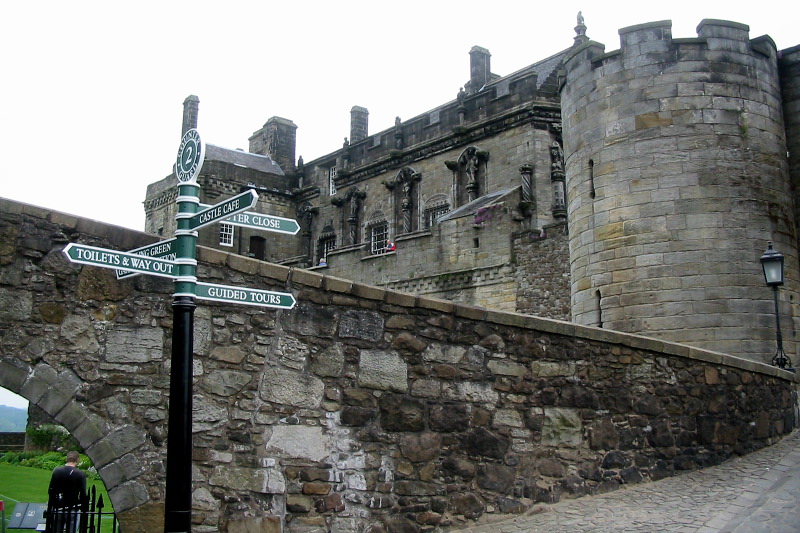
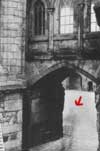
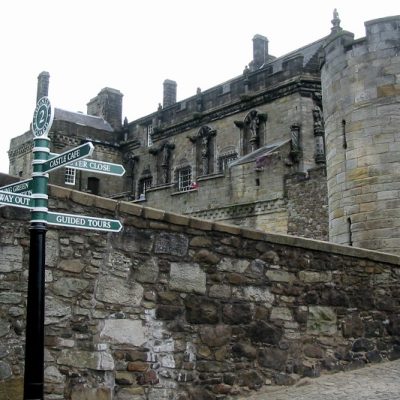
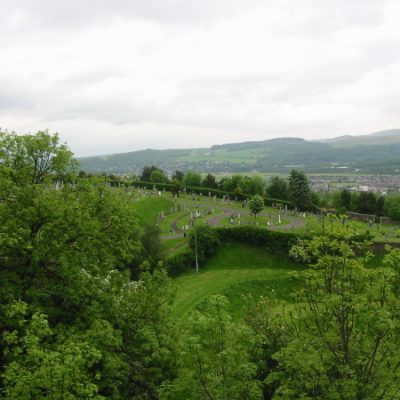
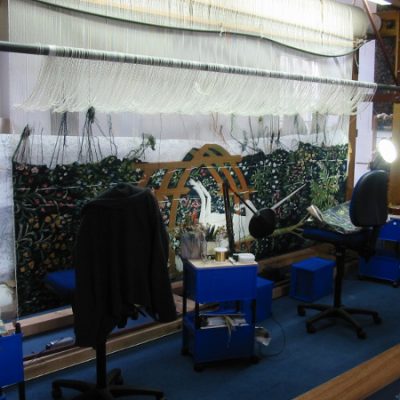

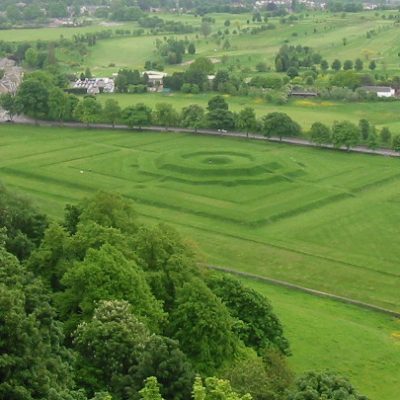
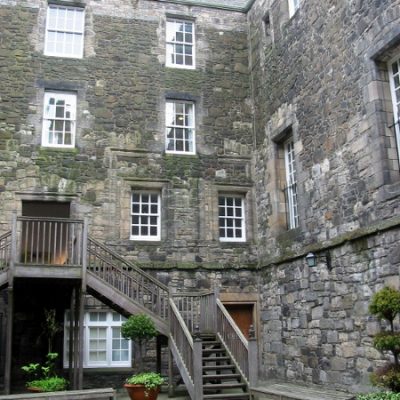
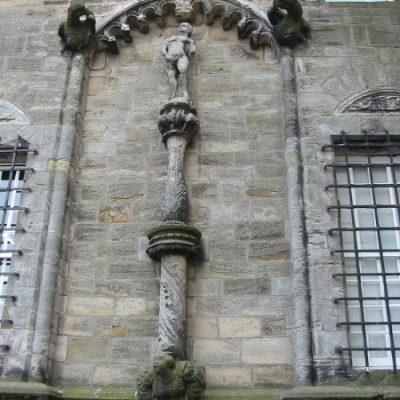
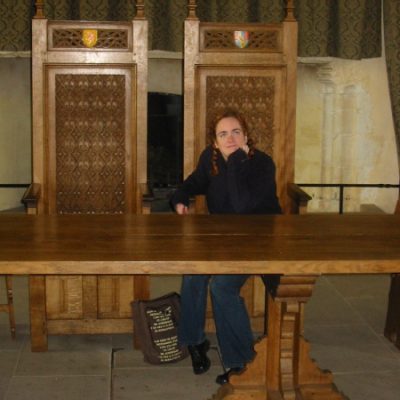
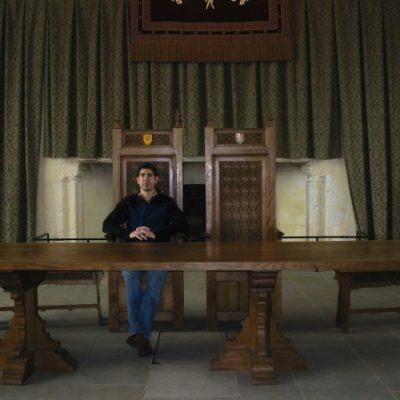
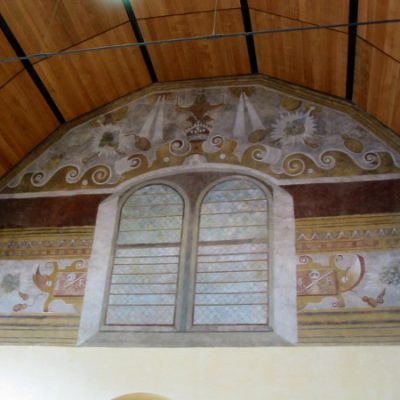
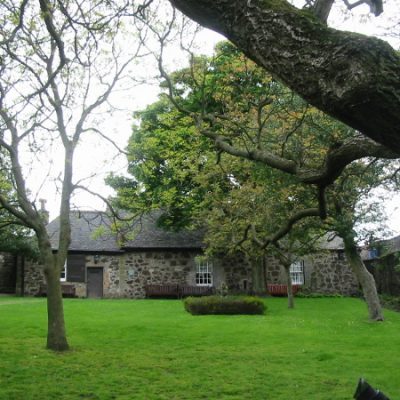
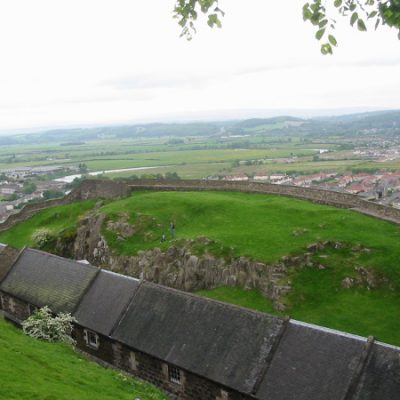
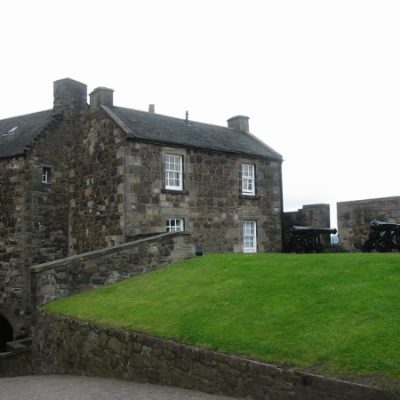
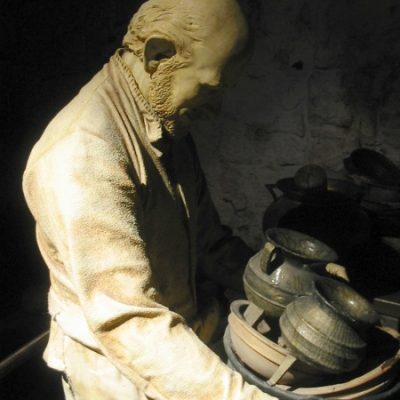
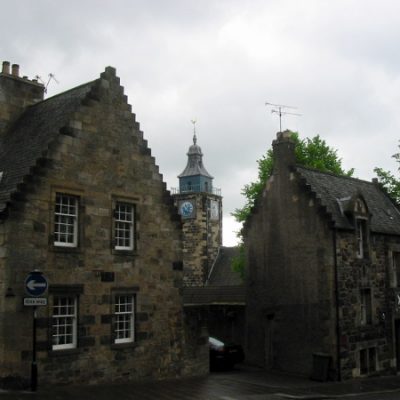
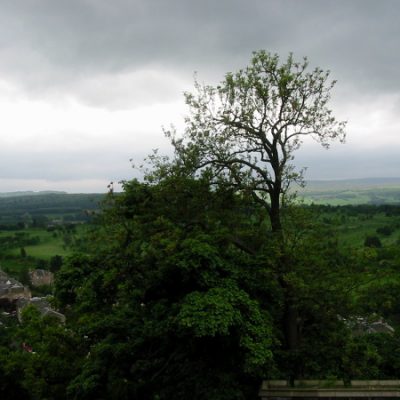
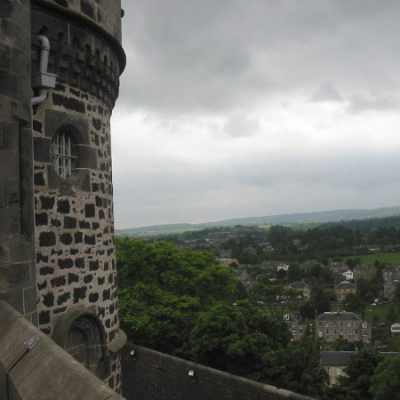
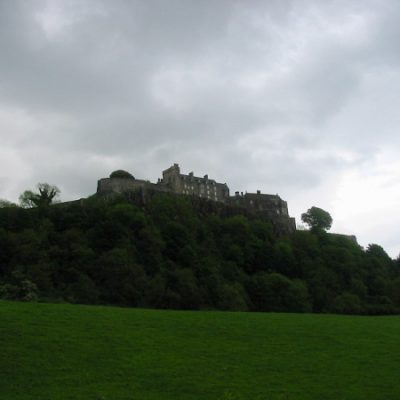
1 comment on “Stirling Castle”Add yours →